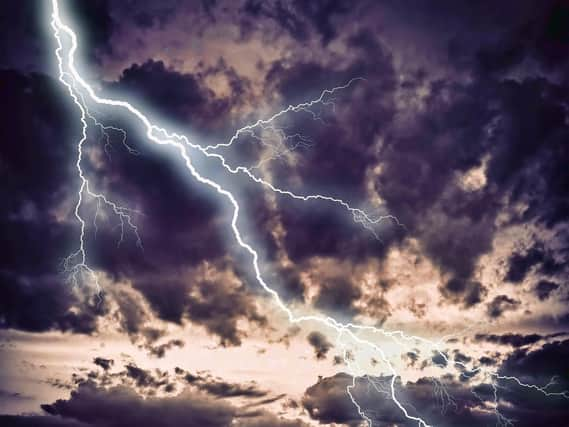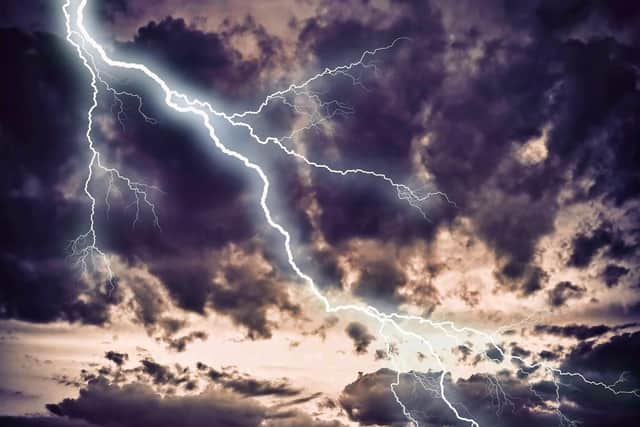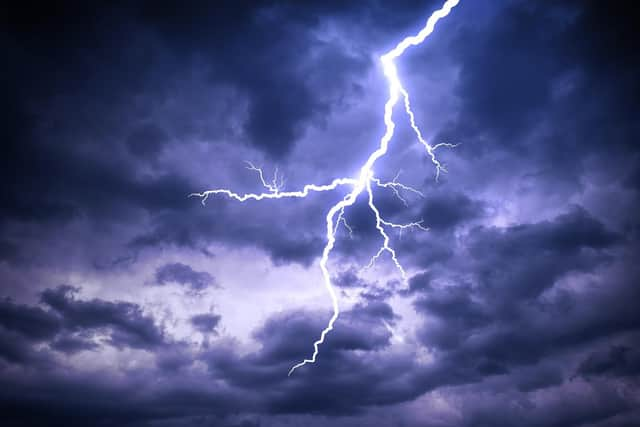Thunderstorms: What causes this extreme weather phenomena and can they be predicted?


What exactly causes the dramatic weather phenomenon of thunder and can thunderstorms be predicted?
Thunder
Thunder is the sound produced by lightning. When lightning strikes, the narrow channel of air through which it travels reaches temperatures of up to 30,000°C almost instantly, and it is this intense heating which causes the air to rapidly expand outward into the cooler air surrounding it. This creates a rippling shock-wave which we hear as a rumbling thunder clap.


Advertisement
Hide AdAdvertisement
Hide AdWhat causes thunderstorms to form and how are they predicted?
According to the Met Office, thunderstorms are caused through the formation of cumulonimbus clouds and usually last no more than half an hour.
A thunderstorm is a series of sudden electrical discharges which results from atmospheric conditions and these discharges result in sudden flashes of light and trembling sound waves, commonly known as thunder and lightning.
Thunderstorms are associated with convective clouds and develop when the atmosphere is unstable, meaning warm air exists underneath much colder air and as the warm air rises it cools and condenses forming small droplets of water.


Advertisement
Hide AdAdvertisement
Hide AdIf there is enough instability in the air, the updraft of warm air is rapid and the water vapour will then quickly form the previously mentioned cumulonimbus cloud, which typically form in under an hour.
As the warm air continues to rise the water droplets then combine to create larger droplets, which then freeze and form ice crystals. As a result of the circulating air in the clouds, water freezes on the surface of the droplet or crystal and eventually the droplets become too heavy to be supported by the updraughts of air, causing them to fall as hail.
As this hail moves within the cloud it picks up a negative charge by rubbing against smaller positively charged ice crystals and the negative charge is attracted to the Earth's surface, other clouds and objects. When the attraction becomes too strong, the positive and negative charges come together in order to balance the difference in a flash of lightning.
The rapid expansion and heating of air caused by lightning produces the accompanying loud clap of thunder.
Where do thunderstorms form?
Advertisement
Hide AdAdvertisement
Hide AdAs thunderstorms are created by intense heating of the earth's surface, they are most common in areas of the globe where the weather is hot and humid.
In the UK thunderstorms are most common over the East Midlands and the South-East.
Over the upcoming May bank holiday weekend, heavy, thundery rain which will slowly move northwards is predicted in the UK.
On Saturday, Southern and Southwestern areas will see further thundery showers and on Sunday, there will be scattered thunderstorms in the south.
Advertisement
Hide AdAdvertisement
Hide AdThis weather forecast highlights that the South of the UK more commonly receives thunderstorms in comparison to other parts of the UK, and with it being estimated that a lightning strike hits somewhere on the earth's surface approximately 44 times every second, it’s not surprising that the UK in general is subject to this dramatic weather phenomena.